
views
Taking Basic Seat Measurements
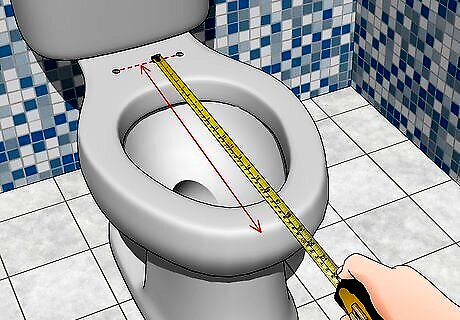
Measure the seat’s length from the bolts to the front. Hold one end of a measuring tape to the bolts at the back of the seat that secure it to the bowl. Draw the other end of the tape to the very tip of the front of the bowl, then note the seat’s length. Be sure to take your measurement down the center of the bowl. For an accurate measurement, hold the measuring tape in line with the centers of the bolts. If necessary, snap up the plastic covers so you can see the bolts. If you can’t pry up the covers with your fingers, use a flat-head screwdriver. Picture the toilet seat as a clock. Measure the length from the center of each side, or from 12 o’clock to 6 o’clock.Tip: Write down your measurements and take them with you to the hardware store, especially if you have an old or non-standard toilet.
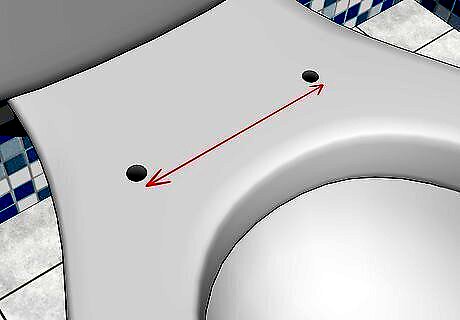
Find the distance between the bolts at the back of the seat. If flaps cover the bolts and you haven’t lifted them, pry them up with your fingers or a flat-head screwdriver. Then measure the bolt spread, or the length between the centers of the mounting bolts. In the U.S., the standard bolt spread is 5 ⁄2 in (14 cm), but there are a few models with spreads of 7 to 10 in (18 to 25 cm). If your toilet’s dimensions aren’t standard, you may need to order a seat directly from the manufacturer. In Europe, the standard bolt spread is approximately 6 to 6 ⁄2 in (15 to 17 cm).
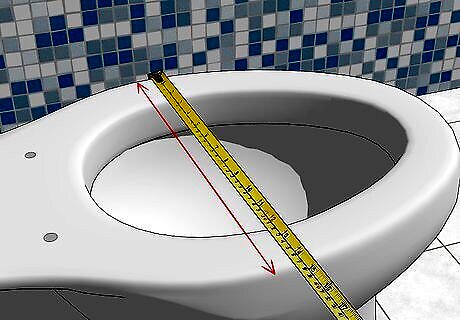
Take the seat’s width measurement. Measure the width to find the best-fitting replacement seat. Hold one end of the measuring tape at the center of the seat’s left side, then bring the other end to the right side. Keep the tape centered, and measure the length between the outer edges of the seats’ sides. Remember to measure from the centers of the sides, or from 9 o’clock to 3 o’clock. While sizes are standardized, there may be slight variations among brands. If you’re replacing the seat, measuring the width can help you find the closest match.
Measuring the Toilet for Specialty Seats

Find the length between the 2 bolt holes. Hold the measuring tape in line with the centers of the bolt holes. Measure the distance between the bolt holes’ centers as accurately as possible. The bolt spread is the most important measurement, especially if you’re buying a specialty seat. If your bolt spread isn’t an American-standard 5 ⁄2 in (14 cm) or a European-standard 6 to 6 ⁄2 in (15 to 17 cm), you may need to order a specialty seat from the toilet's manufacturer.
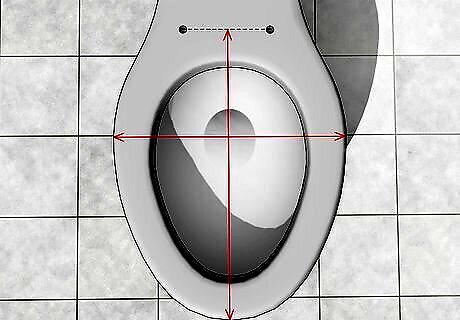
Measure the bowl’s length and width. Hold one end of the measuring tape in line with the centers of the bolt holes, and bring the other end to the front of the bowl. Note the length between the bolt holes and the tip of the bowl’s front edge. Then, as you would with the seat, measure from the outer edges of the bowl’s broadest points to find its width. If your toilet’s dimensions are standard, the bowl’s width isn’t quite as important as the length and bolt spread dimensions. However, measuring the width can ensure a proper fit, especially if you’re buying a specialty seat or have a non-standard toilet.
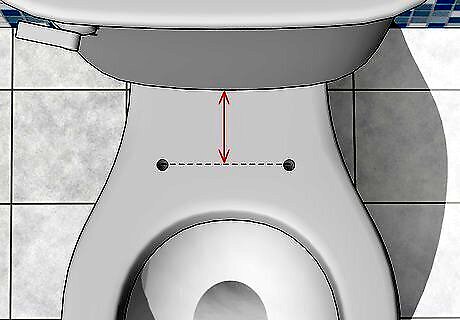
Determine the distance between the bolt holes and the tank. If you’re buying a specialty seat, measure between the centers of the bolt holes and the edge of the tank. Bidet attachments, raised seats, seat warmers, and other specialty seats require a minimum clearance between the bolt holes and the tank. Before investing in a specialty seat, look online to find specifications and minimum clearances for a product you're interested in purchasing. You wouldn’t want to shell out lots of money on a product that doesn’t fit your toilet.
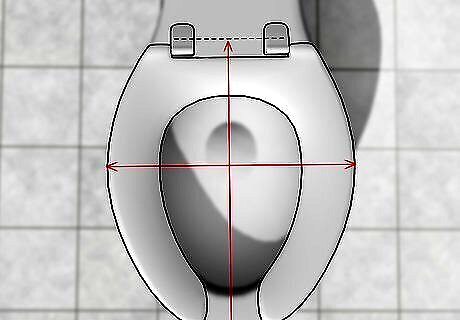
Measure the existing seat if you're buying a snap-on attachment. Types of attachments include accessible raised seats for people with disabilities and potty training seats. Measure your existing seat's length and width, and choose a product with matching dimensions. Even if you can tell your toilet's shape just by looking at it, measure it to ensure the accessible or potty training seat fits snugly. While most products clamp onto the seat, some attachments are hinged-fixed, or secured with the existing seat's mounting bolts. If necessary, measure your toilet's bolt spread in addition to the seat's length and width.Tip: If your seat attachment has armrests or handles, make sure there's enough room between the toilet and any nearby walls or fixtures.
Choosing a Replacement Seat
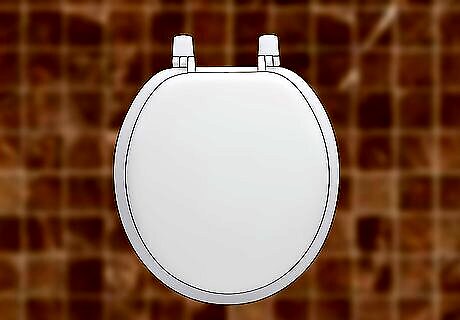
Purchase a round seat if your bowl’s length is about 16 ⁄2 in (42 cm). In the U.S., modern seat sizes are standardized. If your seat is between 16 and 17 in (41 and 43 cm), it’s round. More likely than not, you can just look for a round seat at the hardware or home improvement store and it’ll fit your toilet. You can usually tell the difference between round and elongated seats with the naked eye, but it never hurts to double check. Taking measurements could save you a second trip to the store.
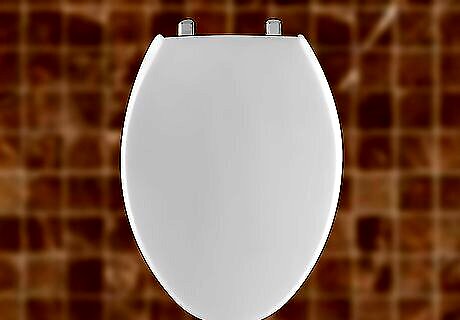
Go with an elongated seat if the bowl’s length is around 18 ⁄2 in (47 cm). In the U.S., the standard size for elongated seats is 18 to 19 ⁄2 in (46 to 50 cm). Elongated seats are easily recognizable but, as with round seats, it’s wise to measure the seat’s length, bolt spread, and width just to be safe.

Select a seat that matches the bowl shape if you have a European toilet. European bowls are usually rounded, pointed, or D-shaped; these shapes are fairly easy to identify with the naked eye. For each shape, the standard length is about 17 in (43 cm), so choosing a replacement seat comes down to finding the right shape.Identifying European bowl shapes: As the name implies, D-shaped seats resemble the letter D and are easy to spot. Pointed seats are slightly elliptical in shape and are typically about ⁄4 in (6.4 mm) longer than round seats, which are nearly perfect circles.
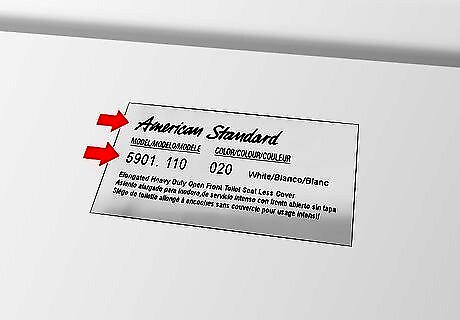
Find your toilet’s make and model if it’s non-standard. While modern seat sizes are standardized, you might find that your older toilet’s dimensions are completely different. You may be able to find older seats online or at specialty plumbing suppliers. Search online for your toilet’s make and model, or try entering keywords such as “toilet seat 8 in (20 cm) bolt spread.” A few contemporary models also have non-standard dimensions. For these toilets, search for matching seats online or order one directly from the manufacturer. To find your toilet’s make and model, lift the tank lid, flip it over, and look for a brand name and model number. If you can’t find the make and model on the tank lid, grab a flashlight and check inside the tank.

















Comments
0 comment